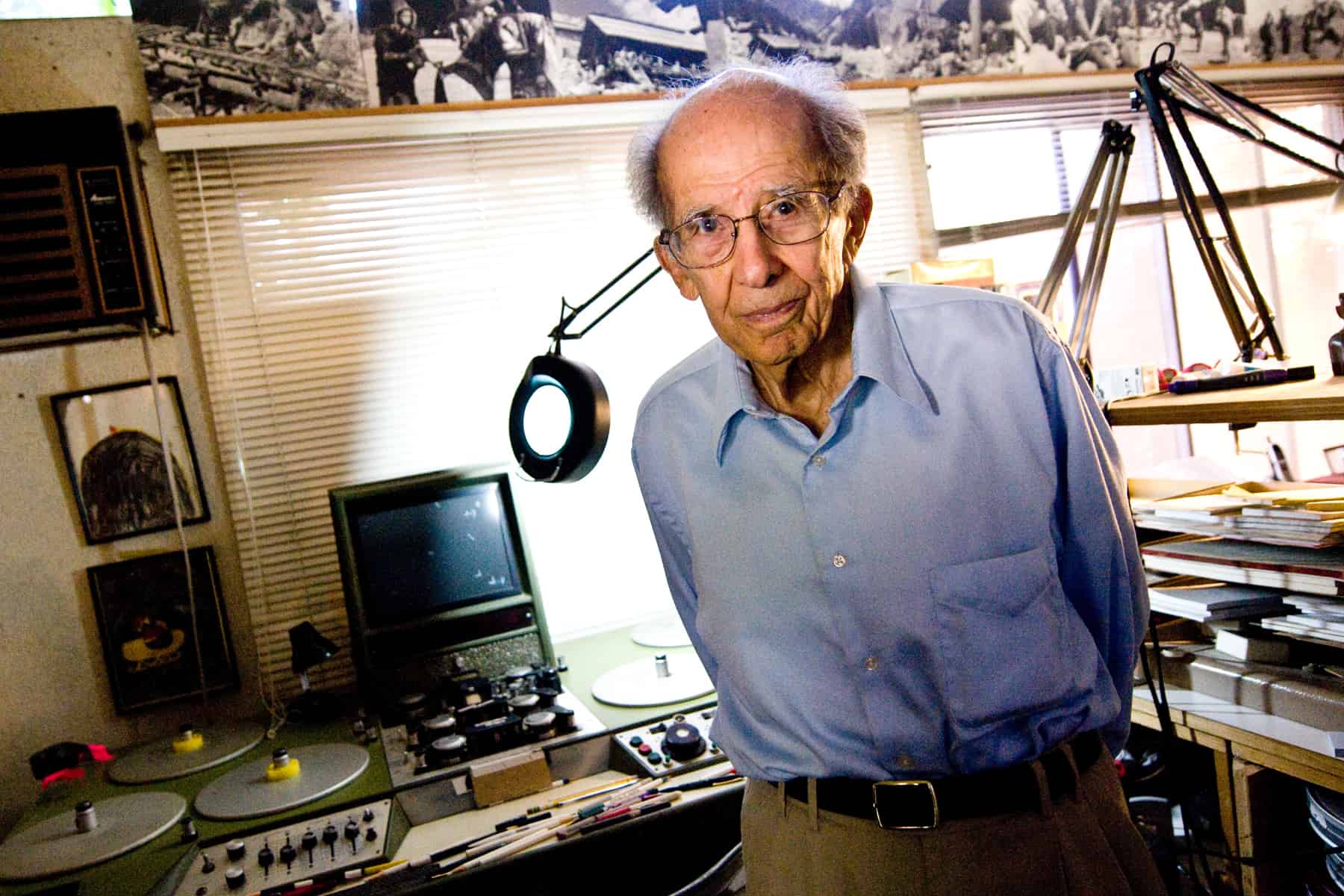Birth of J. Michael Hagopian (October 20, 1913)

(Jacob) Michael Hagopian was a genocide survivor who dedicated his life to the visual documentation of the Armenian annihilation of 1915 and became a pioneering filmmaker of many popular Armenian documentaries.
He was born in Kharpert on October 20, 1913. He survived the genocide in 1915 because his mother hid him in a well behind the family home, or in a mulberry bush, according to a different version. His father was spared because he was an important medical doctor. The family managed to left Turkey for the United States in 1922. They first settled in Boston and then moved to Fresno in 1927.
He first attended California State University at Fresno, and then transferred to the University of California-Berkeley, where he received his B.A. and M.A. in political science. He went on to earn another M.A. and Ph.D. in Government and International Relations from Harvard University. After serving in the U.S. Army Air Corps during World War II, he taught at several universities, including Benares Hindu University, India; American University of Beirut, Lebanon; UCLA, and Oregon State University.
While teaching, Hagopian became aware of the lack of good films to show his classes and concluded that he could produce better documentaries. After completing two years of graduate work in cinema at the University of Southern California, he started a new career as a writer, filmmaker, and producer. In 1952, he founded Atlantis Productions, Inc., and created award-winning films for instructional and informational use in the classroom and on television. His earlier films were about the peoples and cultures of India, Nigeria, the Middle East, as well as Native Americans.
In 1961, he married Antoinette Hobden, and they settled in Thousand Oaks in 1963. In 1990, he laid the groundwork for the establishment of a sister-city relationship between Thousand Oaks and the city of Spitak in Armenia, which was the epicenter of the devastating earthquake of December 7, 1988.
Armenian community leaders approached Hagopian about making a film to mark the 50th anniversary of the Armenian Genocide. In 1965, he produced the film Where Are My People. He later began filming survivors. He made 17 documentaries about Armenian heritage, culture and history. In 1976, he received two Emmy nominations for the writing and production of The Forgotten Genocide, the first full-length feature film on the genocide.
He wrote, directed, and produced more than 70 educational and documentary films, which collectively have won over 160 national and international awards. He established the Armenian Film Foundation in 1979, dedicated to document Armenian life in film. Over a 40-year period, he filmed nearly 400 interviews of survivors and witnesses of the genocide. He earned numerous honors and awards for his film and career.
His filmography on Armenian themes included, among other films, “Historical Armenia” (1967), “The Armenian Case” (1975), “The Forgotten Genocide” (1975), “Strangers in A Promised Land” (1986), “Ararat Beckons” (1991), and “The Witnesses Trilogy”: “Voices from the Lake” (2000), “Germany and the Secret Genocide” (2003), and “The River Ran Red” (2009). The latter was released days before his 95th birthday.
In April 2010 he signed an agreement with the USC Shoah Foundation for the preservation of those materials, which are currently available on the Internet. Six months after the agreement, J. Michael Hagopian passed away on December 10, 2010, at the age of 97, in his Thousand Oaks home.
